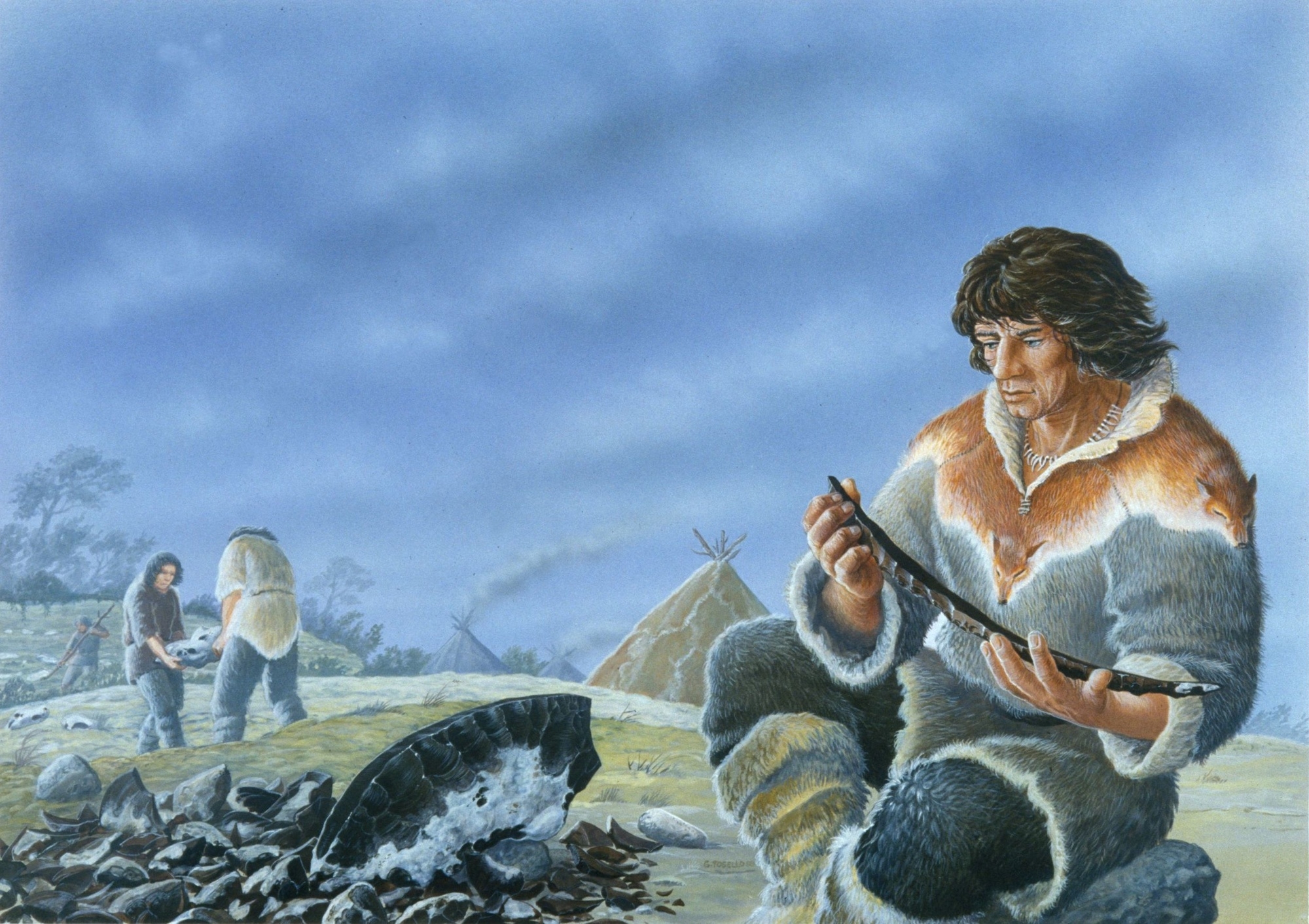
- Home
- Explore the site
- Technology and symbols
- Expertise in everyday activities
Étiolles is renowned among prehistorians as the location of a flint outcrop unusual for the size of its blocks and their quality. We can imagine this was also the case for the Magdalenians, who came back year after year to knap this first-class rock.
Flint knapping
We can recognise the work of some virtuosos producing blades more than 30 cm long, a real feat that prehistorians experimenting with knapping struggle to reproduce. There is also evidence of less skilful knapping of flint products whose dimensions are nonetheless among the largest known in the Magdalenian world. This suggests some sort of adaptation of traditional know-how. The careful study of refits allows us to identify apprentices at different stages of their training.
Minor traces of other activities
Blades that are found to be missing from refits may have been taken and used elsewhere when these nomadic communities changed location. However, the majority of production remained on the site, with tools whose use we have sometimes been able to reconstruct using use-wear analysis.
On reindeer, everything is good...
The majority of tools were used to cut up game its many by-products, such as hides for clothes or the antlers of reindeer. Reindeer antlers were particularly appreciated in the steppes, where there was little wood. The Magdalenians could use them to make tools and weapons, and they excelled at working with antler. The occupants of Étiolles left behind them waste from this work, as well as worn sagaie points. Hunting weapons were therefore replaced on site, as is also confirmed by the abandonment of many flint bladelets, which were used on sagaie points.



